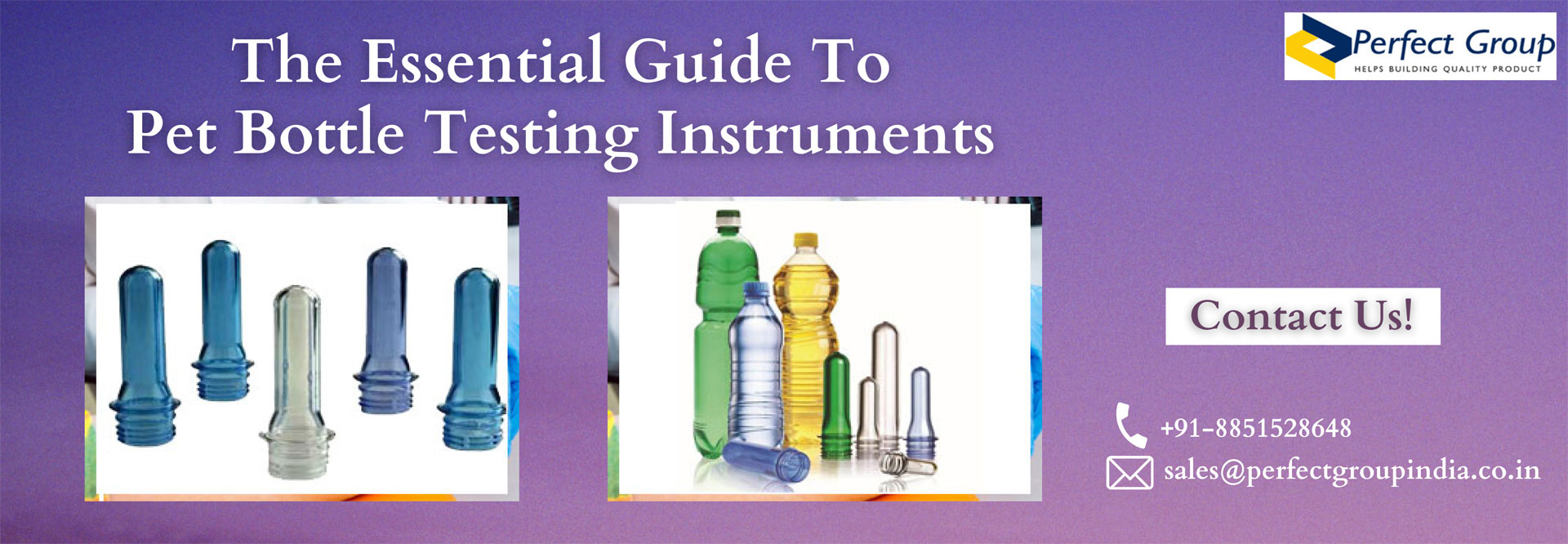The Essential Guide To Pet Bottle Testing Instruments
Pet bottles, also known as polyethylene terephthalate bottles, have become commonplace in our daily life. PET bottles are commonly used for packaging a variety of beverages and liquids, ranging from water bottles to soda cans. However, ensuring the quality and safety of these bottles is of utmost importance, and this is where
PET bottle testing instruments play a crucial role. In this essential guide, we will explore the significance of PET bottle testing and the key instruments involved in the process.
Why PET Bottle Testing is Essential
PET bottles are preferred for packaging due to their lightweight, transparency, and recyclability. However, various factors, like as material faults, manufacturing abnormalities, and environmental factors, might have an impact on the quality and safety of these bottles. Testing is essential to identify and rectify these issues, ensuring that the bottles meet the required standards and regulations. Here are some reasons why PET bottle testing is crucial:Material Integrity:
PET bottles should have consistent material properties to withstand the pressure and conditions during packaging, transportation, and storage.Barrier Properties:
PET bottles are frequently used to keep beverages, and they must have adequate barrier qualities to prevent gas and other external substance infiltration.Dimensional Stability:
The dimensional accuracy of PET bottles is vital to ensure compatibility with filling and capping equipment, preventing leakage and spillage.Transparency and Clarity:
PET bottles should be transparent and clear, allowing customers to view the contents. Testing guarantees that the bottles' optical qualities are preserved.Closure Compatibility:
PET bottles are sealed with closures, and testing ensures that the bottle and closure combination provides a secure and leak-proof seal.Key PET Bottle Testing Instruments
Several instruments are used in the testing process to assess different aspects of PET bottles. Here are some essential PET bottle testing instruments:1. Bottle Burst Tester:
Purpose: Determines the burst strength of PET bottles.How it works: The bottle is inflated till it bursts. The pressure at which this occurs reveals the burst strength of the bottle.
2. Bottle CapTorque Tester:
Purpose: Measures the torque required to open or close bottle closures.How it works: Rotates the closure and measures the force applied, ensuring proper sealing and easy opening for consumers.
3. Vacuum Leak Tester:
Purpose: Detects leaks in PET bottles under vacuum conditions.How it works: The bottle is placed in a vacuum chamber, and any leaks cause a pressure shift, indicating a flaw.
4. Top Load Tester:
Purpose: Evaluates the vertical load-bearing capacity of PET bottles.How it works: To test the bottle's resistance to deformation, apply a compressive weight from the top.
5. Wall Thickness Gauge:
Purpose: Measures the thickness of PET bottle walls.How it works: Wall thickness is measured using ultrasonic or infrared technology to ensure uniformity and strength.
6. Melt Flow Index Tester:
Purpose: During the manufacturing process, the flow properties of the PET material are evaluated.How it works: Measures the rate of extrusion of molten PET under standardized conditions.
Conclusion
Product quality and safety are critical in the PET bottle manufacturing industry. To discover and correct deviations from standards, modern testing devices must be used. From burst strength to wall thickness, each parameter plays a crucial role in determining the overall integrity of PET bottles.Manufacturers and quality control professionals must invest in state-of-the-art PET bottle testing instruments to meet industry standards, regulatory requirements, and consumer expectations. They not only ensure the dependability and safety of their products, but they also contribute to sustainable packaging methods by using recyclable materials.
In conclusion, the essential guide to PET bottle testing instruments emphasizes the importance of a comprehensive testing process in the production of PET bottles. This commitment to quality assurance benefits producers as well as customers by assuring them that the PET bottles they use are dependable, safe, and environmentally friendly.
